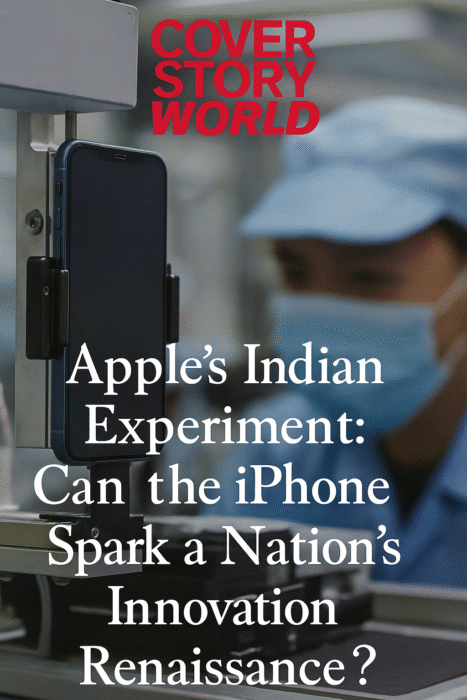Analysis
Apple’s Indian Experiment: Can the iPhone Spark a Nation’s Innovation Renaissance
As Apple deepens its footprint in India, a bigger question emerges—can India move from assembling iconic devices to inventing the next wave of global tech?
By The Cover Story World Global Desk
June 15, 2025
A Factory That Hums with More Than Assembly Lines
It started as a strategic shift. Seeking diversification beyond China, Apple began ramping up iPhone production in India. Now, almost one in five iPhones worldwide is assembled on Indian soil. But this is no longer just a manufacturing story—it’s a turning point in India’s economic and technological narrative.
Apple isn’t just assembling devices in India. It’s building an ecosystem.
Behind every polished phone lies a rising army of local engineers, developers, logistics professionals, and component suppliers. The question now is not whether India can build. It’s whether India can innovate—and whether Apple will be the unlikely spark that ignites that transformation.
Apple’s Ecosystem Effect: More Than Just Jobs
Apple has always been more than a manufacturer—it’s a system-builder. And in India, that system is starting to bear fruit. From industrial training centers to small and mid-sized suppliers learning to meet Cupertino’s famously exacting standards, Apple is indirectly catalyzing a wave of capability upgrades across the board.
When a $3 trillion brand arrives, it doesn’t just bring dollars. It brings discipline, design principles, and the pressure to think bigger.
And India is responding.

Can the iPhone Spark a Nation’s Innovation Renaissance
The Rise of a New Tech Ambition
The Apple effect has galvanized other tech giants, startups, and policymakers to imagine a different future: not just assembling the world’s products, but inventing them. As Apple scales its operations—from assembly lines to developer academies and local app ecosystems—India’s own confidence in design-led innovation is rising.
Indian engineers who once supported backend systems are now contributing to core features, AI tools, and user experience design. The transfer of knowledge is slow, but real.
It’s not far-fetched to imagine a day when an iPhone feature is not only made in India—but imagined here.
From Digital Infrastructure to Digital Ingenuity
Apple’s expansion coincides with India’s bold digital leap. With hundreds of millions now plugged into mobile internet and a vibrant digital payment ecosystem, the conditions are ripe for innovation. The foundations—data access, payment rails, consumer appetite—are robust.
The challenge? Turning those digital roads into runways for takeoff.
Apple has shown that world-class products can be built in India. The next step is world-class ideas.
The R&D Gap: Still a Hurdle to Cross
Despite the momentum, India still trails global peers in research and development investment. While Apple contributes significantly to local employment and technology transfer, building an innovation economy will require bolder steps—deep-tech investments, stronger university-industry ties, and a regulatory environment that rewards invention.
What’s needed is a culture of experimentation—of failing forward. Apple’s presence helps, but the movement must be broader and deeper.
The Bigger Picture: Why Apple’s Bet Matters
Apple’s India story is about more than logistics or cost. It’s a vote of confidence in India’s ability to move up the value chain—from sweat to smarts.
If India succeeds, it won’t just be a nation where iPhones are made. It’ll be a place where ideas that power future generations of iPhones—and much more—are born.
In Apple’s glass and steel manufacturing floors, India sees its own reflection. Not just as a supplier, but as a creator.
And in that mirror lies the future.